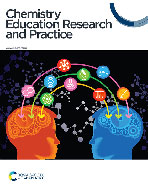University instructors’ knowledge for teaching organic chemistry mechanisms
Abstract
Many recent studies document the difficulties that students experience when learning organic chemistry, often due to the complex visualization and reasoning skills required to successfully understand the ways molecules interact in specific environments. Many of these studies call on instructors to improve their teaching strategies to support students’ learning of organic chemistry mechanisms, but few have focused on instructors’ knowledge of organic chemistry and how they use their knowledge to teach this topic. To investigate university instructors’ knowledge for teaching organic chemistry mechanisms, we utilized a task-based think-aloud interview protocol where graduate teaching assistants (GTAs) and faculty instructors assessed authentic undergraduate student responses to three organic chemistry mechanism questions. We describe this knowledge for a substitution, an acid–base, and an addition reaction. For all mechanisms, we describe how GTA participants’ knowledge for teaching related to their content knowledge. This result revealed differences between GTA and faculty participants’ knowledge for teaching mechanisms that were specific to features of each mechanistic task. For example, in a substitution reaction question, all faculty participants recognized and explained issues with a student's drawing of a transition state and apparent understanding of partial bonds. These features of the student's drawing were not recognized by any GTA participants, who focused instead on the student's prior knowledge about ionic bonding. These findings qualitatively illuminate strengths and weaknesses in graduate students’ knowledge for teaching which can guide how they are supported as instructors.


 Please wait while we load your content...
Please wait while we load your content...